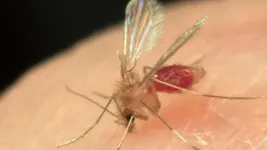(Press-News.org) 'Natural disasters,' sparked by climate change and other natural hazards, increase the triggers for violence against women and girls by boosting the means, opportunity, and underlying drivers, finds a review of the available evidence, published in the online journal BMJ Global Health.
As these disasters are increasing in frequency, severity, and duration worldwide, this consequence must now be formally recognised in public health, violence prevention, and disaster management strategies, urge the researchers.
Over the past two decades, 7348 disasters precipitated by natural hazards were recorded. This is nearly double the number recorded between 1980 and 1999. And between 2008 and 2017, most (84%) of all recorded disasters were related to climate issues.
The researchers base their conclusions on a systematic review of the available published evidence, looking at the association between disasters from natural hazards and violence against women and girls.
Of 37 relevant studies, 20 were quantitative, 16 qualitative (interviews;case studies) and 1 was a mixed-methods design. They assessed exposure to disasters caused by different natural hazard types, including droughts, floods, and hurricanes.
The violence was primarily physical, psychological and sexual. Some studies also looked at murder, controlling or aggressive behaviour, forced early marriage and financial violence.
More than a third (37%) of perpetrators were current or former partners, 15% relatives, 12% strangers, 11% authority figures, 8% friends/neighbours and 16.5% unspecified or other types of perpetrators.
Eight of the 20 quantitative studies found that natural disasters were associated with increased violence against women and girls, and four others found positive associations with particular types of violence.
Five found no association between natural disasters and violence against women and girls, but two commented on exceptionally high rates of this type of violence before the occurrence of a natural disaster.
But the researchers note that violence against women is often under reported, a factor that was evident in the qualitiative studies.
The 16 qualitative studies and the one mixed method study all described violence against women and girls in the wake of natural disasers.
Three main possible triggers emerged: an increase in stressors that spark violence, such as trauma, mental health issues, financial insecurity; an increase in enabling environments, such as absence of policing, health and support services, breakdown of family structures and social isolation; and a worsening of existing drivers, such as gender and social inequalities, lack of female representation and inclusion, etc.
The health consequences for women include unintended pregnancies, unsafe abortions, miscarriages, sexually transmitted infections, poor overall health for mothers and babies, physical injuries, mental health issues, and deaths from murder or suicide, note the researchers.
Although the first known global systematic review of the impact of natural disasters on women's and girls' risk of violence, the researchers acknowledge the lack of high quality, rigorously designed studies and the shortcomings of exposure and outcome measures used in the included studies.
"More high-quality research with greater geographical scope and use of standardised exposure and outcome measures is critical to generate further knowledge on the magnitude of the issue and mechanisms," they write.
"As populations are increasingly affected by climate-related disasters and [violence against women and girls] can have severe and lasting health impacts, existing knowledge must inform rapid action across policy and practice," they insist.
"At the policy level, greater awareness on disaster related [violence against women and girls], gender-sensitive [disaster relief] policies and inclusion of women in disaster management are critical.
"Further, systems for rapid and effective coordination between disaster management, law enforcement and health authorities must be defined clearly to prevent [this type of violence] and address its health consequences," they conclude.
INFORMATION:
Notes for editors
Research: Natural hazards, disasters and violence against women and girls: a global mixed-methods systematic review doi 10.1136/bmjgh-2020-004377
Journal: BMJ Global Health
Link to AMS labelling system
http://press.psprings.co.uk/AMSlabels.pdf
New research from Simon Fraser University suggests that students learning remotely become night owls but do not sleep more despite the time saved commuting, working or attending social events.
The study, led by psychology professor Ralph Mistlberger, Andrea Smit and Myriam Juda, at SFU's Circadian Rhythms and Sleep Lab, compared self-reported data on sleep habits from 80 students enrolled in a 2020 summer session course at SFU with data collected from 450 students enrolled in the same course during previous summer semesters. The study results were recently published in the journal PLOS ONE.
"There is a widespread belief among ...
In a study published today in the Journal of the American Medical Association (JAMA), Johns Hopkins Medicine researchers show that although two doses of a vaccine against SARS-CoV-2 -- the virus that causes COVID 19 -- confers some protection for people who have received solid organ transplants, it's still not enough to enable them to dispense with masks, physical distancing and other safety measures.
This is a follow-up study to an earlier one published in March in JAMA, in which the researchers reported that only 17% of the participating transplant recipients produced sufficient antibodies after just one dose of a two-dose COVID-19 vaccine regimen.
"While there was an ...
Loneliness and social isolation have been significant problems for the general population during the COVID-19 pandemic, but for cancer patients these issues were particularly acute, likely due to isolation and social distancing, according to a new UCSF study.
The study, which is the first to evaluate loneliness, anxiety, depression, fatigue and other symptoms in a single group of patients, is published in Cancer, a peer-reviewed journal of the American Cancer Society.
"We found that oncology patients were experiencing a deep sense of loneliness," ...
Researchers at North Carolina State University and the University of North Carolina Greensboro made a surprising finding while examining areas where sand flies rear their young: a new species of bacteria that is highly attractive to pregnant, or gravid, sand flies. The findings could advance the production of ecologically safe baits or traps to reduce sand fly populations.
Sand flies are vectors for important parasitic diseases affecting people in tropical and subtropical regions in Asia, Africa and the Middle East. One of those diseases is Leishmaniasis, which generally causes ...
HOUSTON - (May 6, 2021) - A Rice University laboratory has adapted its laser-induced graphene technique to make high-resolution, micron-scale patterns of the conductive material for consumer electronics and other applications.
Laser-induced graphene (LIG), introduced in 2014 by Rice chemist James Tour, involves burning away everything that isn't carbon from polymers or other materials, leaving the carbon atoms to reconfigure themselves into films of characteristic hexagonal graphene.
The process employs a commercial laser that "writes" graphene patterns into surfaces that to date have included wood, paper and even food.
The new iteration writes fine patterns of graphene into photoresist polymers, light-sensitive materials used in photolithography and ...
As the human body's largest organ, the skin is responsible for protecting against a wide range of possible infections on all fleshy surfaces, from head to toe. So how exactly does the skin organize its defenses against such an array of threats?
A new Yale study shows that the epidermis, the outermost layer of skin, is comprised of an army of immune cells that station themselves at regular intervals across the skin's vast expanse to resist infection. When necessary, the researchers found, these immune system soldiers are able to reposition themselves to protect vulnerable areas.
The study, published in the journal Nature Cell Biology, was conducted by the lab of Valentina ...
The introduction of lithium-ion (Li-ion) batteries has revolutionized technology as a whole, leading to major advances in consumer goods across nearly all sectors. Battery-powered devices have become ubiquitous across the world. While the availability of technology is generally a good thing, the rapid growth has led directly to several key ethical and environmental issues surrounding the use of Li-ion batteries.
Current Li-ion batteries utilize significant amounts of cobalt, which in several well-documented international cases is mined using child labor in dangerous working ...
The idea of creating quantum computers has long captured the minds of researchers and experts of IT corporations. They are the most powerful computers operating according to the laws of the quantum world and capable of solving many problems more efficiently than the most productive classical supercomputers. Similar developments are underway, for example, at Google and IBM. However, many such projects require the use of cryostats. These are vessels with liquid nitrogen or compressed helium, inside which quantum processors are cooled to temperatures below -270°C. Such a low temperature is required to maintain the superconductivity effect, which is necessary for the operation ...
Today's 10,000 species of birds live in virtually every habitat on Earth, but only a handful have adaptations enabling them to hunt active prey in the dark of night. Scientists have long wondered whether theropod dinosaurs - the group that gave rise to modern birds - had similar sensory adaptations.
A new study led by University of the Witwatersrand scientist, Professor Jonah Choiniere, sought to investigate how vision and hearing abilities of dinosaurs and birds compared. The international team of researchers used CT scanning and detailed measurements to collect information ...
New Haven, Conn. -- If paleontologists had a wish list, it would almost certainly include insights into two particular phenomena: how dinosaurs interacted with each other and how they began to fly.
The problem is, using fossils to deduce such behavior is a tricky business. But a new, Yale-led study offers a promising entry point -- the inner ear of an ancient reptile.
According to the study, the shape of the inner ear offers reliable signs as to whether an animal soared gracefully through the air, flew only fitfully, walked on the ground, or sometimes went swimming. In some cases, the inner ear even indicates whether ...





